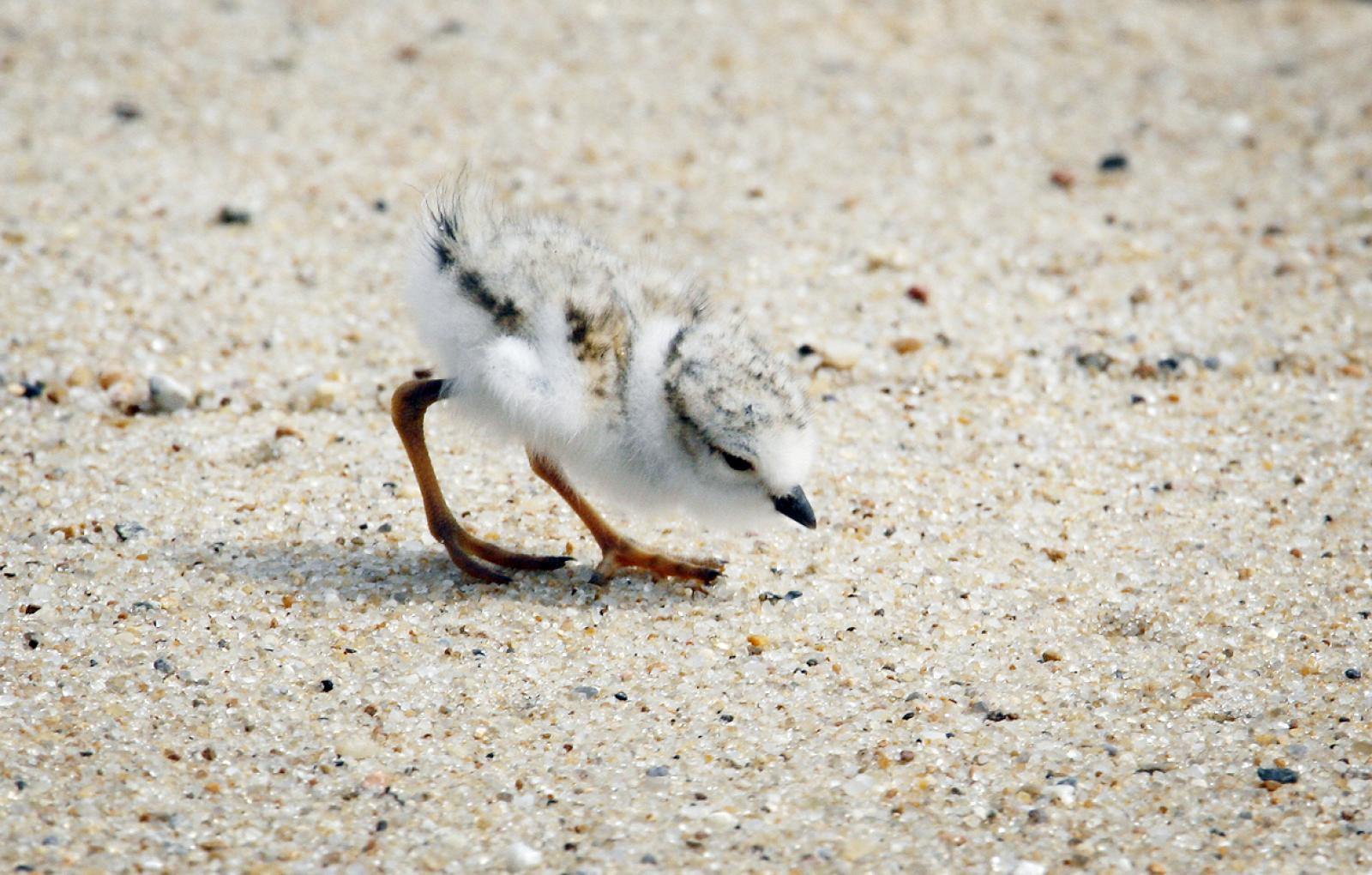T he group of birds referred to as shorebirds includes a wide array of species. There are all the sandpipers and all the plovers. There are turnstones, godwits, curlews, avocets, woodcock and phalaropes as well. On Martha’s Vineyard we are fortunate to still have the right sorts of habitat to attract a few shorebird nesters. We have willets in the tidal marshes at a number of locations, and it is possible there are still killdeer and spotted sandpipers, although four-legged predators have made them exceptionally scarce. The real standout shorebird nesters on the Vineyard are iconic at this point: the piping plover, because it is truly endangered and represents a tug-of-war between recreationists and conservationists over beach use at a certain time of the year, and the American oystercatcher, because its presence on our beaches is on the rise and because, simply put, it is the most outrageous looking and acting feathered beast to be found in these parts.
A sandy beach is essential habitat for nesting piping plovers, and it is a preferred habitat for the kind of oystercatchers we have on the East Coast. While most American shorebirds breed on tundra expanses in the high Arctic and are locked into impressively long migration flights, both the piping plover and the American oystercatcher are less ambitious in terms of globe-trotting. They both end up wintering along the southern part of the U.S. Atlantic coastline and on the shores of the Gulf of Mexico. Last February at Stuart, Fla., I photographed wintering piping plovers that had been banded in Michigan, so it’s not that they don’t have to travel to avoid the rigors of winter; they just do not travel as far as many shorebirds do.
There are duned barrier beaches on the Vineyard where piping plovers and oystercatchers nest within sight of each other. They are not competitors for space or food. Within the same species, however, disputing territorial limits can be in constant play, and it takes up a lot of the nesting birds’ energy.
Piping plovers are about six and a half inches long, while oystercatchers can be 16 to 20 inches long. The plovers are designed to match the color of their dry sand environment. Everything about the plover chicks’ appearance and behavior is aimed at being invisible on the beach. The downy chicks are especially cryptic and almost impossible to distinguish from their surroundings if they are not moving. Oystercatchers, on the other hand, are loud to the extreme in voice and coloration. Their pied feathering, outrageous orange-red beaks and repetitive whistling calls announce them from considerable distance.
For food, the plovers hunt anywhere from within the cover of the dune grasses right down to the water, whether it is the ocean’s lapping edge or the muddy flats of bays and great ponds. A few days ago I watched a tiny piping plover chick, which was working the South Shore beach completely alone, inspect and then grab a small spider from the sand. As adults they are mostly after a variety of invertebrate prey: crustaceans, marine worms, insects and insect larvae. Oystercatchers, on the other hand, seek and destroy mollusks, bivalves, worms, crabs and such, all of which they can get at by probing, hammering, crushing or prying with their extraordinary beaks.
Besides how they differ in looks and feeding technique, the two species have completely divergent child-rearing regimens, once the chicks are hatched. Piping plover chicks are truly precocial, able to stand, to run and to find food on their own within hours of hatching. They move in a typical plover pattern, running, stopping to look and pecking prey from the surface of the sand. In contrast, oystercatcher young need to learn from their parents how to forage for food, so they are fed until they can manage on their own, typically for a period of about two months.
While these two shorebirds could not look more different, they do have a lot of behavior in common, beyond the fact that they can fly above the earth and miraculously produce small replicants of themselves every June. Both species prefer to nest right on the sand in a shallow scrape with hardly anything in or around it that would announce a nest; they lay small clutches of cryptically spotted eggs and not more than four; both parents may incubate the eggs and brood the youngsters (in their first few days of life, the shorebird babies require their parents’ help in regulating body temperatures); both parents help defend their young, including the practice of seducing a predator away from the nest or the young using distraction displays. Also, if the first clutch of eggs is lost to storms or predators, both species will usually lay another clutch. Both species incubate their eggs for about four weeks. Then it takes another four to five weeks for the young to fly.
When you are lucky enough to encounter these birds on Vineyard shores, please do not do anything to make them wish they (or you) were elsewhere. We want them to stay.
Lanny McDowell sells avian fine art photographic prints online at ottgallerymv.com/lanny_mcdowell_avian_art; he writes a blog on birding at ottgallerymv.com/lannymcdowellavianart/ where you can find more photographs and articles about shorebirds.





Comments
Comment policy »